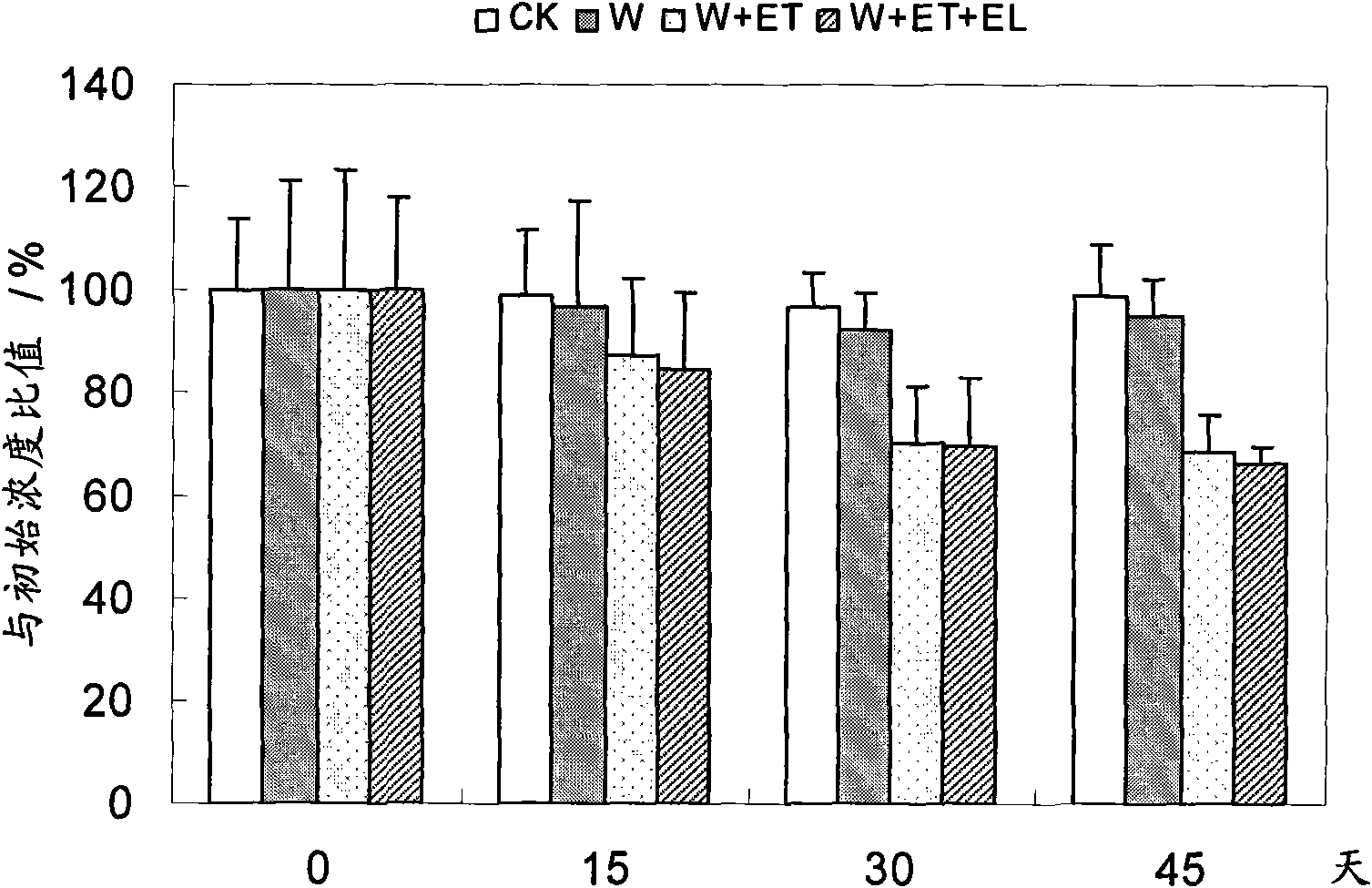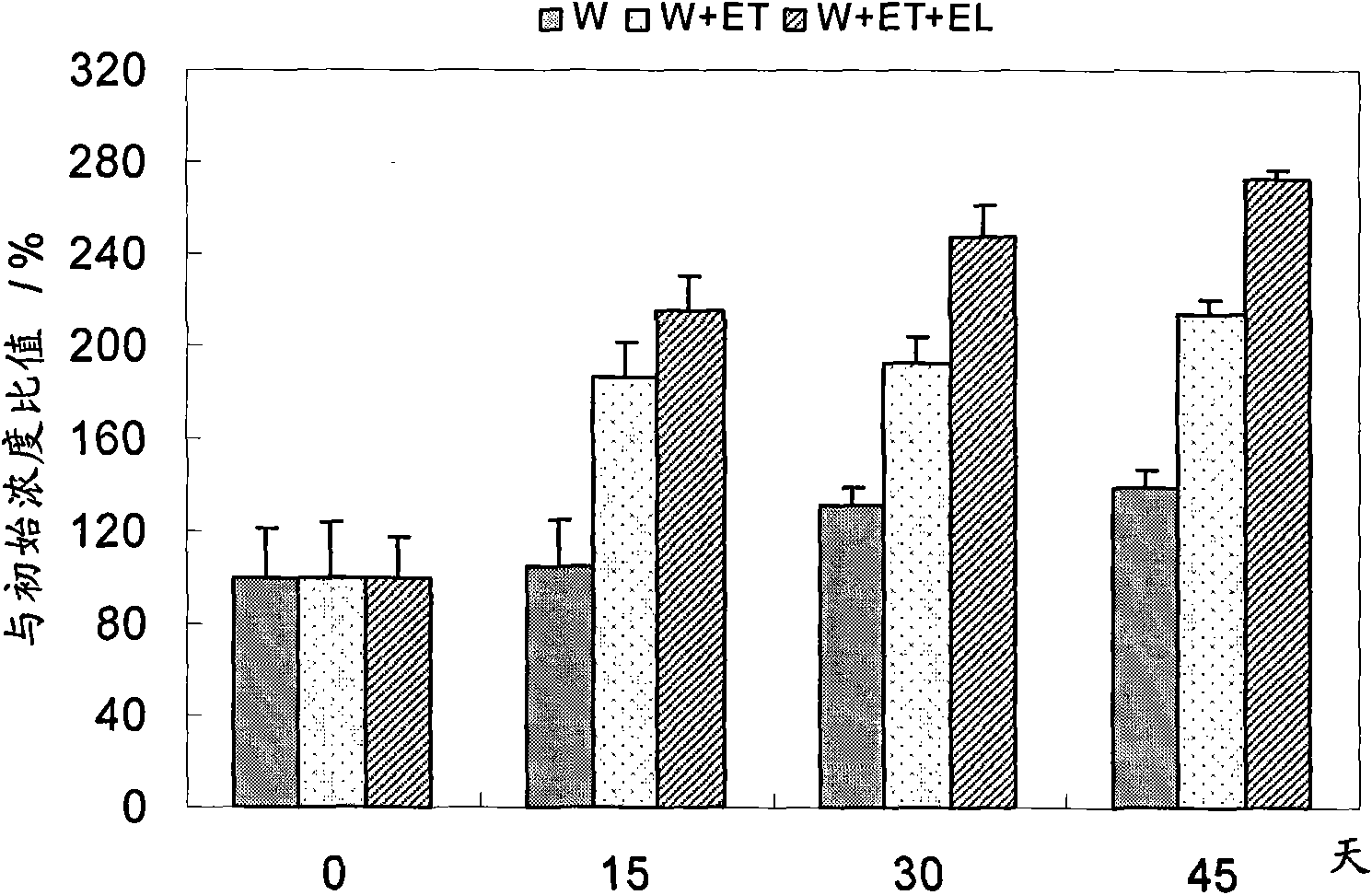Chemical enhanced phytoremediation method of polycyclic aromatic hydrocarbon-cadmium pollution soil
A technology for cadmium-contaminated soil and polycyclic aromatic hydrocarbons, which is applied in the field of soil pollution control, can solve the problems of complicated steps and poor restoration effect, and achieves the effects of enhancing restoration effect, realizing restoration and improving restoration efficiency.
- Summary
- Abstract
- Description
- Claims
- Application Information
AI Technical Summary
Problems solved by technology
Method used
Image
Examples
Embodiment 1
[0026] Remediation effect of chemically enhanced phytoremediation on cadmium pollution in soil under complex pollution conditions
[0027] The restoration test site is located in a town in Jiangning District, Nanjing. During the test, first dig out 200m 2 For the soil in the rectangular plot, build the test pond and prepare the infiltration water collection system, then backfill the soil, backfill in layers when backfilling the topsoil, and evenly sprinkle the aqueous solution of Cd and polycyclic aromatic hydrocarbon phenanthrene in layers And the solution of pyrene, after fully mixing, level the land, and finely grind the large soil particles on the surface. Then use PVC partitions to divide into several 1×1m 2 The square community, the partition depth is 25cm. Every 3 adjacent cells is a group of parallel. The plant to be planted is Weeping Willow J1011, and the planting time is 3 days after the pollution treatment. The treatment groups are: soil control group, Weeping...
Embodiment 2
[0032] Remediation effect of chemically enhanced phytoremediation on phenanthrene pollution in soil under complex pollution conditions
[0033] Its basic steps are the same as in Example 1, and the treatment groups include: soil control group, willow willow control group, willow willow+EDTA group, willow willow+EDTA+ethyl lactate group, which are respectively denoted as CK, W, W+ET and W+ET+EW. Figure 4 The change of the concentration of phenanthrene and pyrene in the soil after the beginning of various treatments is given. From Figure 4 It can be seen that after the treatment began, the planting of weeping willow (4 plants / m 2 ) can promote the decrease of phenanthrene concentration in soil, but under W treatment, the decrease of phenanthrene concentration in soil is not significantly different from that under CK treatment. Weeping willow has been planted for 4 months before the treatment. At this time, the concentration of phenanthrene in the leaves and stems of weeping...
Embodiment 3
[0037] Remediation effect of chemically enhanced phytoremediation on pyrene pollution in soil under complex pollution conditions
[0038] Its basic steps are the same as in Example 1, and the treatment groups include: soil control group, willow willow control group, willow willow+EDTA group, willow willow+EDTA+ethyl lactate group, which are respectively denoted as CK, W, W+ET and W+ET+EW. Figure 7 The change of pyrene concentration in the soil after the beginning of various treatments is given. Under W treatment, the decrease of pyrene concentration in soil was not significantly different from that under CK treatment. Depend on Figure 7 It can be seen that the addition of EDTA (N+ET group) has a slight promotion effect on the reduction of pyrene concentration in the soil, but the effect has no statistically significant difference (p>0.05). Ethyl lactate (280ml / m 2 ) had a certain promoting effect on the reduction of pyrene concentration in soil ( Figure 7 ).
PUM
 Login to View More
Login to View More Abstract
Description
Claims
Application Information
 Login to View More
Login to View More - R&D
- Intellectual Property
- Life Sciences
- Materials
- Tech Scout
- Unparalleled Data Quality
- Higher Quality Content
- 60% Fewer Hallucinations
Browse by: Latest US Patents, China's latest patents, Technical Efficacy Thesaurus, Application Domain, Technology Topic, Popular Technical Reports.
© 2025 PatSnap. All rights reserved.Legal|Privacy policy|Modern Slavery Act Transparency Statement|Sitemap|About US| Contact US: help@patsnap.com



